Understanding Game Design in Gamification

Home Services Our Works Gamification 101 Case Studies Turnkey Event Contact Languages Home Services Our Works Gamification 101 Case Studies Turnkey Event Contact Languages Home Services Our Works Gamification 101 Case Studies Turnkey Event Contact Languages Home Services Our Works Gamification 101 Case Studies Turnkey Event Contact Languages Edit Template Understanding Game Design in Gamification In the ever-evolving landscape of engagement strategies, gamification stands out as a powerful tool that leverages game design elements in non-game contexts to enhance user engagement, motivation, and loyalty. Understanding the fundamentals of game design within gamification is crucial for businesses and institutions looking to implement these strategies effectively. This article delves into the core aspects of game design in gamification, supported by research and expert insights, highlighting how Level Up powered by Agate can assist organizations in harnessing this dynamic tool for various objectives. The Essence of Game Design in Gamification Core Game Mechanics Game design in gamification focuses on the integration of core game mechanics such as points, badges, leaderboards, challenges, and progress tracking into traditional processes. As outlined in the ‘Game Design Principles Usable in Gamification’, these elements are crucial in creating an engaging experience that encourages user participation and commitment By understanding these mechanics, businesses can craft experiences that resonate with their audience, driving desired behaviors and outcomes. User Engagement and Motivation Effective game design taps into intrinsic and extrinsic motivation factors. Intrinsically, gamification should foster a sense of autonomy, competence, and relatedness, enhancing user satisfaction and sustained engagement. Externally, tangible rewards such as discounts, freebies, and public recognition can serve as additional motivators. According to MDPI research, designing gamification with a balanced approach to motivation is key to its success in educational and business settings. Personalization and Adaptability A one-size-fits-all approach does not work in gamification. Personalization is essential, as highlighted in the research by MDPI. Gamification strategies should be adaptable to the specific needs, interests, and behaviors of the target audience. This customization enhances the relevance and effectiveness of the gamified system, making it more likely to achieve the intended objectives. Key Elements of Game Design in Gamification Game Mechanics Game mechanics refer to the rules and systems that govern the game. In gamification, game mechanics are used to create a sense of progression and achievement. For example, a gamified loyalty program might use points and badges to reward customers for repeat purchases. Game Dynamics Game dynamics refer to the interactions and relationships between players and the game environment. In gamification, game dynamics are used to create a sense of community and social interaction. For example, a gamified social media platform might use leaderboards and challenges to encourage users to engage with each other. Game Aesthetics Game aesthetics refer to the visual and auditory elements of the game. In gamification, game aesthetics are used to create an immersive and engaging experience. For example, a gamified educational platform might use interactive simulations and animations to make learning more enjoyable. Strategic Implementation of Game Design in Business Enhancing Training and Development Gamified learning environments use game elements to make education and training more engaging and effective. By simulating real-life scenarios and incorporating competitive elements, employees are more likely to absorb information, apply new skills, and revisit the material. Boosting Marketing Efforts Gamification can significantly amplify marketing campaigns by increasing user engagement and content virality. Implementing game mechanics in marketing initiatives can drive participation, social sharing, and brand loyalty, ultimately boosting conversion rates and ROI. Streamlining Recruitment and Assessment For recruitment, gamification can transform the selection process by creating competitive scenarios that test candidates’ skills and fit for the role. This approach not only makes the assessment process more engaging but also more telling of a candidate’s potential performance. Level Up Powered by Agate: Pioneering Gamification Solutions Level Up powered by Agate excels in crafting bespoke gamification strategies that align with organizational goals, whether to enhance marketing, boost learning outcomes, or streamline recruitment processes. Their expertise in integrating sophisticated game mechanics into business operations helps organizations enhance engagement and achieve substantial returns on investment. Conclusion Game design is a vital component of successful gamification strategies, transforming standard processes into engaging, motivating, and rewarding experiences. With the expertise of Level Up powered by Agate, businesses and institutions can effectively implement gamification to meet diverse goals, enhancing both user experience and organizational outcomes. Frequently Asked Questions Q: How does gamification improve employee training programs? A: Gamification introduces elements of fun, competition, and reward into training, making learning more engaging and improving information retention. Q: Can gamification be applied to any industry? A: Yes, gamification techniques are versatile and can be tailored to suit the unique challenges and dynamics of any industry, from healthcare to education, retail to corporate. Q: What are the first steps in developing a gamification strategy? A: The first step is to define clear objectives, understand the target audience, and determine the key behaviors to be encouraged or changed. Then, partnering with a skilled gamification developer like Level Up powered by Agate is crucial. Q: How do you measure the success of a gamification strategy? A: Success can be measured by specific metrics such as user engagement levels, completion rates, performance improvements, and ultimately, how well the gamification meets its defined objectives. If you are interested in learning more about gamification and how it can benefit you or your organization Check out our gamification services page and contact us today. We are ready to help you create a gamification experience that aligns with your needs and preferences. All Posts All Literasi Keuangan Lebih Baik dengan Gamifikasi: Kolaborasi dengan Bank Jago October 30, 2024/ Level Up powered by Agate Berpartisipasi sebagai Pembicara di Studium Generale BINUS University October 24, 2024/ Aplikasi Gamifikasi Terbaik untuk Pendidikan October 4, 2024/ Menciptakan Game yang Menyenangkan untuk Upaya Pemasaran October 3, 2024/ Bagaimana Membangun Game Dapat Memberdayakan Bisnis Anda October 2, 2024/ Contoh Gamifikasi Terbaik yang Perlu Kamu Ketahui October 1, 2024/ Memilih Partner Gamification dengan Perusahaan Pengembang Game September 30, 2024/ Memanfaatkan Mini Game
The Many Benefits of VR Learning for Business and Institutions
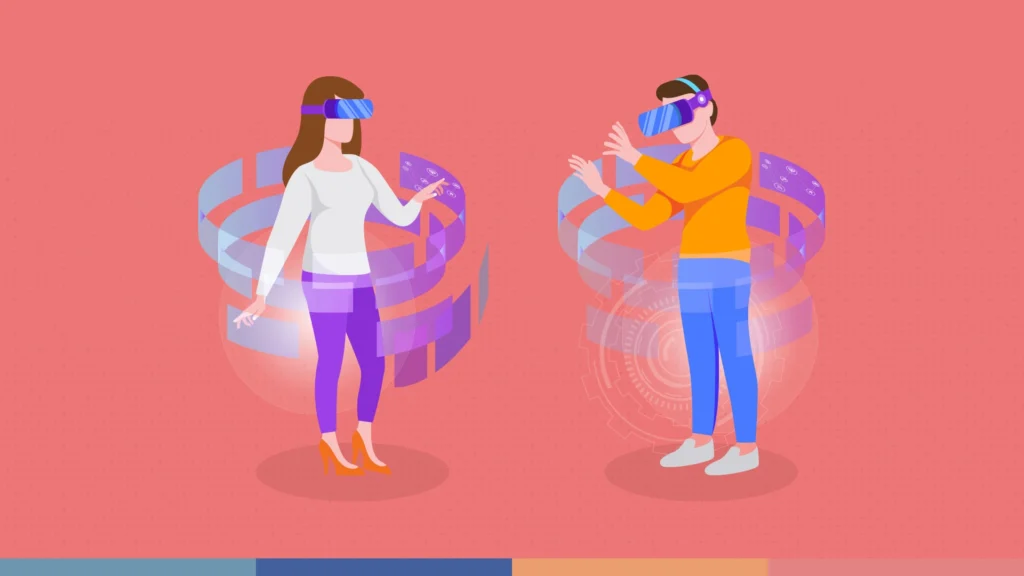
Home Services Our Works Gamification 101 Case Studies Turnkey Event Contact Languages Home Services Our Works Gamification 101 Case Studies Turnkey Event Contact Languages Home Services Our Works Gamification 101 Case Studies Turnkey Event Contact Languages Home Services Our Works Gamification 101 Case Studies Turnkey Event Contact Languages Edit Template The Many Benefits of VR Learning for Business and Institutions Virtual Reality (VR) learning is transforming educational paradigms within businesses and institutions, presenting an array of benefits from enhanced engagement to deeper knowledge retention. This innovative approach utilizes immersive simulations to create realistic, interactive environments where learners can practice skills and absorb information in a controlled setting. Beyond the obvious technological allure, VR learning offers significant advantages crucial for developing and continuously improving workforce skills. This article explores the multifaceted benefits of VR learning, supported by statistics, and outlines how Level Up powered by Agate can help integrate these solutions to drive business success. Key Benefits of VR Learning Enhanced Retention and Recall Research shows that VR learning can significantly improve retention rates. According to the National Training Laboratory, the average retention rate for lecture-based learning is only 5%, compared to 75% for learning by doing, which VR simulations enable. This is because VR engages multiple learning modalities, including visual, auditory, and kinesthetic learning, allowing users to experience and interact with the curriculum in a dynamic way. Safe and Scalable Training Environments VR provides a safe environment for training in industries where real-life tasks can be dangerous or costly. For instance, in sectors like healthcare, aviation, and heavy machinery, VR allows employees to practice procedures and use equipment in a risk-free setting, reducing the risk of accidents and material costs associated with live training. Customizable Learning Experiences One of the most significant advantages of VR learning is the ability to tailor experiences to meet specific educational needs. VR applications can be designed to replicate complex situations or procedures specific to a particular field or company, offering a personalized learning experience that is not feasible through traditional methods. Increased Engagement and Motivation VR’s immersive nature captures and holds learners’ attention much longer than traditional and even other e-learning formats can. By gamifying the learning process—incorporating elements such as points, badges, and leaderboards—VR can motivate learners to engage more deeply with the content and achieve higher performance levels. Real-Time Feedback and Assessment VR learning environments can offer immediate feedback, which is critical for the learning process. Learners can adjust their actions and understand the consequences of their decisions instantly, promoting active learning and faster improvement. Level Up Powered by Agate: Elevating VR Learning Level Up powered by Agate specializes in creating custom VR learning solutions that help businesses and institutions harness the full potential of immersive technology for education and training. By focusing on each client’s unique needs and challenges, Level Up designs VR applications that are not only technologically advanced but also aligned with specific learning outcomes and business goals. Whether it’s increasing ROI, enhancing marketing strategies, or improving recruitment processes through better assessments, Level Up has the expertise to deliver results. Conclusion VR learning is redefining educational strategies within the business and institutional sectors, offering an array of benefits that traditional learning environments cannot match. With the support of VR specialists like Level Up powered by Agate, organizations can effectively implement VR learning solutions tailored to their specific needs, ensuring not only an enhanced learning experience but also improved operational outcomes. Frequently Asked Questions Q: How does VR learning improve ROI for businesses? A: VR learning reduces training costs, minimizes workplace accidents, and increases employee efficiency, all of which contribute positively to a company’s ROI. Q: Can VR learning be integrated into existing LMS systems? A: Yes, VR content and platforms can often be integrated with existing Learning Management Systems (LMS) to track learner progress, completion rates, and assessment scores. Q: What industries are best suited for VR learning? A: While almost all industries can benefit from VR learning, it is particularly valuable in fields such as healthcare, engineering, aviation, and customer service, where practical skills are critical. Q: Are there barriers to implementing VR learning solutions? A: Initial barriers can include the cost of VR hardware and developing custom content. However, as technology advances, these costs are decreasing, making VR more accessible to a wider range of businesses and institutions. If you are interested in learning more about gamification and how it can benefit you or your organization Check out our gamification services page and contact us today. We are ready to help you create a gamification experience that aligns with your needs and preferences. All Posts All Literasi Keuangan Lebih Baik dengan Gamifikasi: Kolaborasi dengan Bank Jago October 30, 2024/ Level Up powered by Agate Berpartisipasi sebagai Pembicara di Studium Generale BINUS University October 24, 2024/ Aplikasi Gamifikasi Terbaik untuk Pendidikan October 4, 2024/ Menciptakan Game yang Menyenangkan untuk Upaya Pemasaran October 3, 2024/ Bagaimana Membangun Game Dapat Memberdayakan Bisnis Anda October 2, 2024/ Contoh Gamifikasi Terbaik yang Perlu Kamu Ketahui October 1, 2024/ Memilih Partner Gamification dengan Perusahaan Pengembang Game September 30, 2024/ Memanfaatkan Mini Game dalam Aplikasi Loyalitas untuk Meningkatkan Keterikatan Pelanggan September 27, 2024/ Apakah VR dalam Pendidikan Menjanjikan? September 26, 2024/ Load More End of Content. All company names, brand names, trademarks, logos, illustrations, videos and any other intellectual property (Intellectual Property) published on this website are the property of their respective owners. Any non-authorized usage of Intellectual Property is strictly prohibited and any violation will be prosecuted under the law. © 2023 Agate. All rights reserved. Home Services Our Works Contact Gamification 101 Case Studies Gamification for Marketing Gamification for Learning Instagram Linkedin Twitter Facebook Youtube Edit Template
10 Reasons to Implement Virtual Reality Training
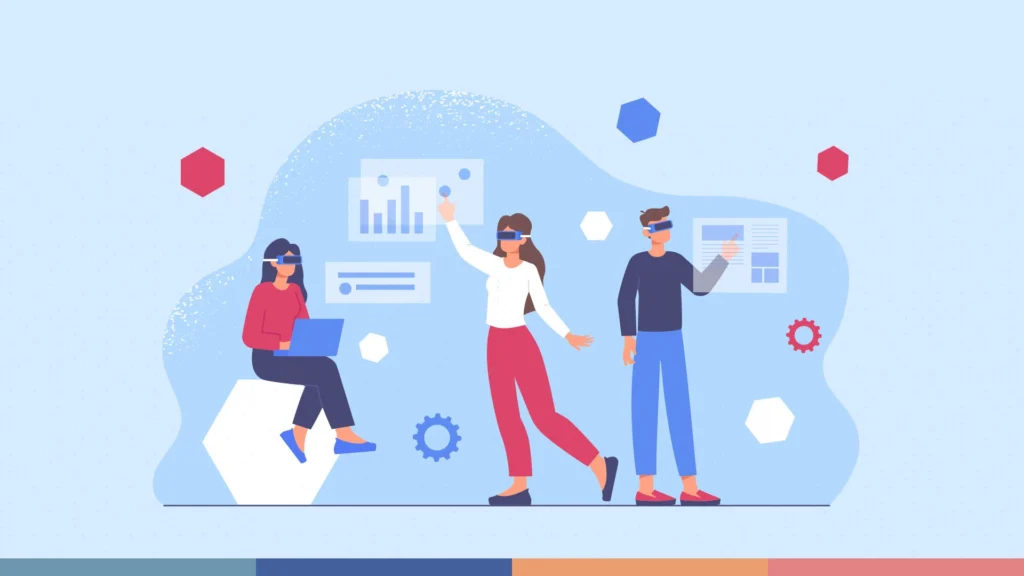
Home Services Our Works Gamification 101 Case Studies Turnkey Event Contact Languages Home Services Our Works Gamification 101 Case Studies Turnkey Event Contact Languages Home Services Our Works Gamification 101 Case Studies Turnkey Event Contact Languages Home Services Our Works Gamification 101 Case Studies Turnkey Event Contact Languages Edit Template 10 Reasons to Implement Virtual Reality Training As businesses and institutions seek innovative ways to enhance their training programs, Virtual Reality (VR) emerges as a transformative tool that offers unparalleled advantages. VR training can revolutionize how educational content is delivered and absorbed, providing immersive, interactive experiences that traditional methods simply cannot match. It is shown that the Virtual Reality (VR) market is experiencing explosive growth. Valued at less than $12 billion in 2022, expert projections forecast a surge to over $22 billion by 2025. This isn’t mere growth; it’s a VR revolution unfolding before our eyes. This article explores ten compelling reasons to implement VR training within your organization, supported by statistics and unique insights, and highlights how Level Up powered by Agate can facilitate these advancements. Top Reasons for Adopting VR Training 1. Improved Retention and Recall VR training has been shown to improve employee retention rates. By providing a more engaging and interactive experience, VR training can help employees retain information better and stay motivated Studies show that VR training significantly improves retention rates. According to the research paper “Effectiveness of Virtual Reality on Learning Engagement” published on ResearchGate, the study revealed that learners’ engagement in VR-based learning has a positive relationship with learning effectiveness, and that engagement in learning is an important mediator in explaining the learning process of VR training. 2. Safe Learning Environment VR provides a safe environment for training in high-risk industries such as healthcare, aviation, and manufacturing. Trainees can practice dangerous procedures or operate complex machinery without the risk of real-world consequences, reducing workplace accidents and associated costs. 3. Scalability VR training programs can be easily scaled to accommodate any number of participants, regardless of their physical location. This scalability makes it a cost-effective solution for organizations looking to train large numbers of employees consistently and efficiently. 4. Immediate Feedback VR training environments can offer instant feedback to learners, allowing them to learn from their mistakes in real-time and adjust their techniques on the fly. This immediate response accelerates the learning process and enhances overall competency. 5. Customizable Content VR training modules can be tailored to meet specific learning objectives, job roles, or industry requirements. This customization ensures that the training is relevant and aligned with organizational goals, maximizing its effectiveness. 6. Reduced Training Time Implementing VR training can lead to a significant reduction in training time. The immersive experience and interactivity help learners grasp complex concepts more quickly than traditional methods, decreasing the time spent in training sessions. 7. Emotional Engagement VR’s immersive nature elicits strong emotional responses from users, which can lead to greater empathy and understanding, particularly in fields like healthcare or customer service where understanding different perspectives is crucial. 8. Remote Training Capability With VR, training can be conducted remotely, eliminating the need for physical presence in a training facility. This flexibility can reduce travel costs and logistical complications, making training sessions more accessible and frequent. 9. Enhanced Collaboration Some VR training programs are designed to support multiple users simultaneously, fostering teamwork and communication skills among participants. These collaborative capabilities are particularly beneficial in preparing teams for complex, multi-person tasks. 10. Competitive Advantage Offering cutting-edge VR training can position a company as an innovative leader in its industry. It can attract top talent and impress stakeholders, contributing to the organization’s reputation and success. Level Up Powered by Agate: Your VR Training Partner Level Up powered by Agate specializes in developing tailored VR training solutions that align with your strategic goals. By partnering with Level Up, organizations can leverage the full potential of VR to enhance training outcomes, from designing immersive curricula to evaluating its impact on performance. Conclusion Implementing VR training offers a myriad of benefits, from improved learning outcomes and safety to increased scalability and remote accessibility. As organizations look to the future of training, partnering with experienced VR developers like Level Up powered by Agate will be key to leveraging these advantages effectively and staying competitive in a rapidly evolving marketplace. Frequently Asked Questions Q: What industries benefit most from VR training? A: While VR training is versatile across many sectors, industries such as healthcare, aviation, manufacturing, and customer service see particularly high benefits due to the complex and risk-associated nature of their work. Q: How do you measure the effectiveness of VR training? A: Effectiveness can be measured through various metrics, including pre- and post-training assessments, retention rates, speed of learning, and trainee feedback, all contributing to a comprehensive view of performance improvements. Q: What are the initial costs of implementing VR training? A: Initial costs can vary based on the complexity of the VR training programs and the hardware used. However, these are often offset by the long-term savings associated with reduced training times, lower travel costs, and fewer safety incidents. Q: Can VR training replace traditional training methods completely? A: While VR can enhance or replace many aspects of traditional training, it is most effective when integrated as part of a blended learning approach, combining the best of both digital and conventional educational methods. If you are interested in learning more about gamification and how it can benefit you or your organization Check out our gamification services page and contact us today. We are ready to help you create a gamification experience that aligns with your needs and preferences. All Posts All Literasi Keuangan Lebih Baik dengan Gamifikasi: Kolaborasi dengan Bank Jago October 30, 2024/ Level Up powered by Agate Berpartisipasi sebagai Pembicara di Studium Generale BINUS University October 24, 2024/ Aplikasi Gamifikasi Terbaik untuk Pendidikan October 4, 2024/ Menciptakan Game yang Menyenangkan untuk Upaya Pemasaran October 3, 2024/ Bagaimana Membangun Game Dapat Memberdayakan Bisnis Anda October 2, 2024/ Contoh Gamifikasi Terbaik yang
How VR Technology Can Boost Your Online Presence

Home Services Our Works Gamification 101 Case Studies Turnkey Event Contact Languages Home Services Our Works Gamification 101 Case Studies Turnkey Event Contact Languages Home Services Our Works Gamification 101 Case Studies Turnkey Event Contact Languages Home Services Our Works Gamification 101 Case Studies Turnkey Event Contact Languages Edit Template How VR Technology Can Boost Your Online Presence In an era where digital presence is paramount, Virtual Reality (VR) technology emerges as a groundbreaking tool for businesses and institutions aiming to elevate their online engagement. VR revolutionizes user experience and offers distinctive ways to interact with customers, enhancing brand perception and online visibility. This article explores how integrating VR can augment your online presence, with a focus on innovative strategies and real-world applications that go beyond the conventional, and how Level Up powered by Agate can facilitate this transformation. Transforming Online Interaction with VR User Engagement The immersive nature of VR creates uniquely engaging experiences that captivate users’ attention far longer than traditional digital content. For instance, real estate tours, retail shopping, and interactive learning environments in VR can significantly increase users’ time spent, boosting engagement metrics—a key factor in online success. According to a joint study conducted by YuMe and Nielsen, adding virtual reality experiences to digital marketing strategies leads to 27% higher emotional engagement and 34% longer interaction times compared to 2D content, offering a whole new level of excitement and curiosity for your audience. Content Delivery VR allows dynamic content creation that can interact with users in real-time, offering personalized experiences based on user behavior and preferences. This level of customization not only enhances user satisfaction but also improves content efficacy, leading to higher conversion rates. This technology can adapt to user behavior and preferences, providing a highly personalized experience that is unique to each user. This personalization can range from adjusting the virtual environment based on the user’s actions to tailoring the narrative of a virtual story based on the user’s choices. This customization level enhances user satisfaction by allowing users to have a more immersive and engaging experience. Users are no longer passive consumers of content; instead, they become active participants who can influence their virtual experiences. This active participation can lead to a deeper emotional connection with the content, thereby enhancing user satisfaction. Social Sharing and Virality VR experiences are inherently unique and engaging, prompting users to share their experiences on social media. This not only enhances organic reach but also increases brand awareness. A viral VR campaign can significantly amplify your brand’s visibility and attract new customers to your digital platforms. Strategic Applications of VR for Online Growth Virtual Tours and Showcases Offering VR tours of properties, showrooms, or educational campuses can attract a wider audience online, providing a realistic sense of place and scale that photos and videos cannot match. This strategy is particularly effective in sectors like real estate, tourism, and higher education. Interactive Product Demos VR can transform online shopping by allowing customers to try products virtually before buying. From clothing to furniture, VR adds a layer of interaction that helps customers make informed decisions, thus enhancing user satisfaction and reducing return rates. Remote Collaboration and Events For businesses and institutions, VR can facilitate remote collaboration and virtual events, making them as interactive and engaging as their physical counterparts. Conferences, meetings, and even trade shows can be held in a fully virtual environment, expanding access and participation globally. Level Up Powered by Agate: Elevating Your VR Capabilities Level Up powered by Agate specializes in crafting bespoke VR solutions that enhance online presence and engagement. With their expertise, businesses can leverage VR to not only attract and retain users but also create memorable brand experiences that drive loyalty and advocacy. Level Up’s strategic approach ensures that VR implementations align with your marketing goals and audience needs, maximizing return on investment. Conclusion VR technology offers powerful opportunities to enhance your online presence, providing immersive experiences that captivate and engage audiences. By strategically implementing VR, businesses and institutions can not only stand out in a crowded digital landscape but also achieve significant improvements in user interaction and brand loyalty. Partnering with Level Up powered by Agate ensures access to cutting-edge VR solutions tailored to meet specific business needs and objectives, driving online success and growth. Frequently Asked Questions Q: What are the initial steps to integrate VR into my online strategy? A: Begin by defining clear objectives for using VR, such as increasing user engagement or enhancing the shopping experience, and then collaborate with a VR solutions provider like Level Up powered by Agate to develop tailored content. Q: How does VR integration impact ROI? A: VR can enhance ROI by increasing user engagement, improving conversion rates through better product visualization, and reducing costs associated with physical showrooms or training facilities. Q: Can VR help in hiring and recruitment processes? A: Absolutely. VR can simulate job environments and tasks, allowing candidates to experience roles first-hand and enabling recruiters to assess suitability in a practical, immersive setting. Q: What technical considerations should be made when adopting VR? A: Consider the platform compatibility, hardware requirements, and scalability of the VR solutions to ensure they can be effectively integrated into your existing digital infrastructure. If you are interested in learning more about gamification and how it can benefit you or your organization Check out our gamification services page and contact us today. We are ready to help you create a gamification experience that aligns with your needs and preferences. All Posts All Literasi Keuangan Lebih Baik dengan Gamifikasi: Kolaborasi dengan Bank Jago October 30, 2024/ Level Up powered by Agate Berpartisipasi sebagai Pembicara di Studium Generale BINUS University October 24, 2024/ Aplikasi Gamifikasi Terbaik untuk Pendidikan October 4, 2024/ Menciptakan Game yang Menyenangkan untuk Upaya Pemasaran October 3, 2024/ Bagaimana Membangun Game Dapat Memberdayakan Bisnis Anda October 2, 2024/ Contoh Gamifikasi Terbaik yang Perlu Kamu Ketahui October 1, 2024/ Memilih Partner Gamification dengan Perusahaan Pengembang Game September 30, 2024/ Memanfaatkan Mini Game dalam Aplikasi Loyalitas
What to Expect from an AR Developer
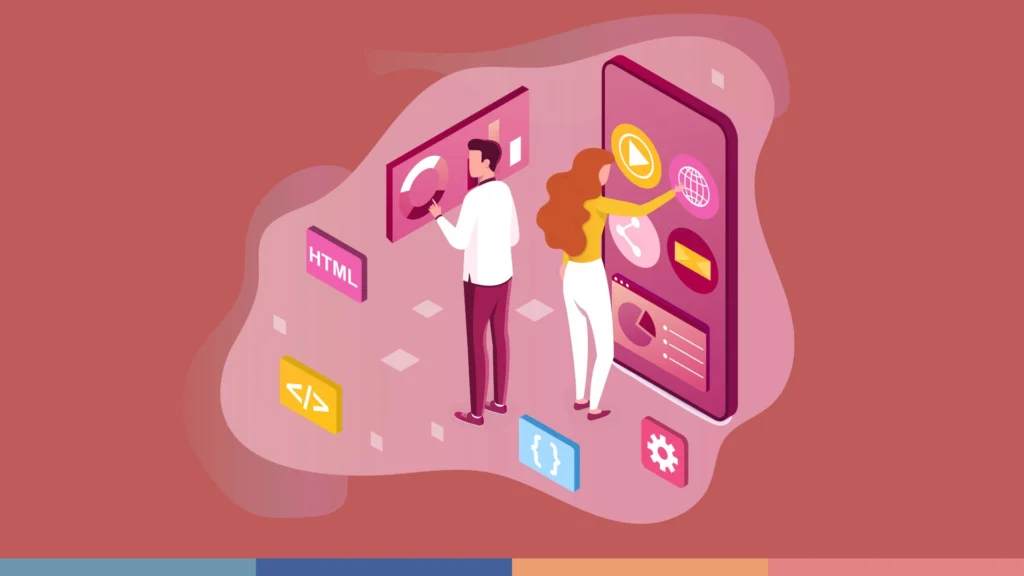
Home Services Our Works Gamification 101 Case Studies Turnkey Event Contact Languages Home Services Our Works Gamification 101 Case Studies Turnkey Event Contact Languages Home Services Our Works Gamification 101 Case Studies Turnkey Event Contact Languages Home Services Our Works Gamification 101 Case Studies Turnkey Event Contact Languages Edit Template What to Expect from an AR Developer Augmented Reality (AR) is transforming how businesses interact with their customers by overlaying digital information onto the real world. As AR technology continues to evolve, the demand for skilled AR developers is growing. These specialists are key to unlocking the potential of AR to create innovative, interactive experiences. Understanding what to expect from an AR developer can help businesses effectively integrate this technology into their operations, marketing, and customer service strategies. This article explores the skills, responsibilities, and impacts of AR developers in today’s digital landscape. Skills and Responsibilities of an AR Developer Technical Expertise AR developers possess a deep understanding of AR technology and software development kits (SDKs) like ARKit for iOS and ARCore for Android. Proficiency in programming languages such as C#, Java, and Swift is crucial. Developers also need strong skills in using graphic design tools and 3D modeling software to create lifelike digital elements that seamlessly integrate with the real world. Creative Problem-Solving An effective AR developer combines technical skills with creativity to solve complex design and functionality challenges. They must envision how digital elements function in a three-dimensional space and interact with physical objects, ensuring that the AR experience is intuitive and engaging for users. They must envision how digital elements function in a three-dimensional space and interact with physical objects, ensuring that the AR experience is intuitive and engaging for users. This involves understanding the user’s perspective and designing the AR experience to be as seamless and natural as possible. The developer must consider how the digital elements will appear and behave in different lighting conditions, distances, and angles. They also need to account for how these elements will interact with various physical objects in the user’s environment. User Experience Focus User experience (UX) is paramount in AR development. AR developers work to ensure that applications are user-friendly and accessible, providing clear navigation and interaction cues. They should also consider the ergonomics of AR applications, such as how long users might hold up a device and interact with virtual elements to prevent fatigue or discomfort. What Businesses Can Expect from AR Development Enhanced Customer Engagement AR developers can significantly boost how businesses engage with customers. For retail, AR allows customers to try products virtually, from clothing to furniture, enhancing confidence in purchase decisions. In real estate, potential buyers can visualize property changes before they are made, providing a powerful tool for decision-making. Improved Training and Education In sectors like manufacturing and healthcare, AR developers create applications that aid in training and procedural education. For example, AR can overlay a machine’s maintenance steps directly onto the equipment, or guide a medical professional through a complex procedure. Innovative Marketing Solutions AR developers help businesses implement cutting-edge marketing strategies that stand out in a competitive marketplace. Whether it’s through interactive advertisements or virtual events, AR can captivate an audience, offering immersive experiences that traditional media cannot match. Collaborating with AR Developers Setting Clear Objectives Before initiating an AR project, it is crucial for businesses to clearly define their objectives. Understanding what you want to achieve with AR technology will guide the developer in designing an application that meets your specific needs. Ongoing Communication Effective communication throughout the development process ensures that the AR application aligns with business goals and user expectations. Regular updates and feedback loops help in refining the application and addressing any issues promptly. Realistic Expectations While AR offers tremendous potential, businesses should maintain realistic expectations regarding the technology’s capabilities and development timeline. An experienced AR developer can help set these expectations and suggest practical solutions to achieve desired outcomes. Level Up Powered by Agate: Enhancing AR Solutions When it comes to integrating AR into your business operations, partnering with a seasoned AR developer is crucial. Level Up powered by Agate stands out as a leader in the field, providing expert AR development services that tailor solutions to meet specific business needs. With their extensive experience, Level Up can help businesses enhance customer interaction, streamline operations, and create impactful marketing campaigns through advanced AR technologies. By collaborating with Level Up powered by Agate, businesses can ensure their AR projects are not only innovative but also aligned with their strategic objectives, maximizing the return on investment. Conclusion Hiring an AR developer can propel a business into the future of digital interaction, providing tools that enhance customer engagement, improve operational efficiency, and create unforgettable marketing experiences. As AR technology progresses, the role of the AR developer will only grow in importance, making their expertise invaluable for any forward-thinking business. Frequently Asked Questions Q: How long does it typically take to develop an AR application? A: Development time can vary widely based on the complexity of the app and the resources available, ranging from a few weeks to several months. Q: What industries benefit most from AR applications? A: While many industries can benefit, retail, real estate, healthcare, education, and manufacturing see particularly high impacts from AR integrations. Q: Can AR applications be integrated with existing digital infrastructure? A: Yes, AR developers can often integrate AR functionalities into existing digital platforms, enhancing the utility of current apps and systems. Q: What is the average cost of hiring an AR developer? A: Costs can vary based on the developer’s location, experience, and the project’s scope. It’s advisable to get detailed quotes and assess multiple proposals to understand the investment required. Understanding the role and potential of an AR developer is key to successfully incorporating this innovative technology into your business strategy, unlocking new opportunities for growth and customer engagement. If you are interested in learning more about gamification and how it can benefit you or your organization Check out our gamification
How an AR/VR Developer Can Boost Your Business

Home Services Our Works Gamification 101 Case Studies Turnkey Event Contact Languages Home Services Our Works Gamification 101 Case Studies Turnkey Event Contact Languages Home Services Our Works Gamification 101 Case Studies Turnkey Event Contact Languages Home Services Our Works Gamification 101 Case Studies Turnkey Event Contact Languages Edit Template How an AR/VR Developer Can Boost Your Business In today’s rapidly evolving digital landscape, Augmented Reality (AR) and Virtual Reality (VR) are not just cutting-edge technologies, but strategic business tools that can drive significant growth and innovation. AR and VR developers play a crucial role in harnessing these technologies to transform various business processes, enhance customer engagement, and create immersive brand experiences. This article explores how hiring an AR/VR developer can boost your business, offering a competitive edge in a crowded market. The Strategic Value of AR/VR Developers Enhancing Customer Experiences AR/VR developers can create bespoke solutions that elevate the customer experience, making it more interactive and engaging. For instance, AR apps can allow customers to visualize products in their own space before purchasing, as seen in the furniture and real estate industries, significantly boosting conversion rates and customer satisfaction. VR, on the other hand, can offer virtual tours of facilities or immersive simulations of services, providing a deeper connection to the brand. Streamlining Operations AR and VR technologies can streamline operations and reduce costs through efficient training and simulation. AR/VR developers can craft training modules that simulate real-world scenarios for industries like manufacturing, healthcare, and logistics, providing employees with valuable hands-on experience without the risks associated with physical training. Innovative Marketing Strategies An AR/VR developer can revolutionize a company’s marketing strategy by integrating augmented and virtual experiences that attract and retain customer attention. Whether through interactive advertisements, virtual launch events, or engaging social media campaigns, AR and VR have proven to increase brand visibility and impact. How AR/VR Developers Drive Business Innovation Product Development and Testing AR and VR can facilitate the rapid prototyping and testing of new products in a virtual environment, reducing the time and resources spent on R&D. Developers can create accurate 3D models that stakeholders can interact with, providing immediate feedback that can be integrated into the design process before any physical models are built. Data Visualization and Analysis AR/VR developers can leverage these technologies to transform complex data sets into visual, interactive formats, making it easier for decision-makers to understand and act on insights. This capability is especially valuable in fields such as finance, logistics, and e-commerce, where strategic decisions depend heavily on data analytics. Enhancing Remote Collaboration As remote work becomes more prevalent, AR/VR developers are essential in creating tools that enhance collaboration among geographically dispersed teams. Virtual meeting rooms and collaborative virtual workspaces can mimic the experience of working together in an office, fostering teamwork and improving productivity. Level Up Powered by Agate: Expertise in AR/VR Development Level Up powered by Agate specializes in developing AR and VR solutions tailored to meet specific business needs. With a focus on creating innovative and effective applications, Level Up helps businesses enhance their operational efficiency, boost their marketing strategies, and improve customer engagement through immersive technology. Conclusion Incorporating AR and VR into your business operations can offer substantial benefits across various fronts—from transforming customer experiences to enhancing internal operations and driving marketing innovation. With the expertise of an AR/VR developer, businesses can not only keep up with industry trends but set new standards in their markets. Level Up powered by Agate remains a valuable partner for any business ready to explore the potential of these transformative technologies. Frequently Asked Questions Q: What ndustries benefit most from AR/VR development? A: While almost all sectors can benefit, retail, real estate, healthcare, education, and manufacturing see the most direct advantages from integrating AR and VR technologies. Q: What should businesses consider when hiring an AR/VR developer? A: Businesses should evaluate the developer’s experience, portfolio, understanding of industry-specific challenges, and ability to deliver scalable, user-friendly solutions. Q: How cost-effective is investing in AR/VR development? A: The initial investment in AR/VR development can be offset by the substantial long-term benefits, including increased sales, enhanced training outcomes, and improved customer loyalty. Q: Can AR/VR integration help in customer retention? A: Yes, AR and VR applications tend to create memorable experiences that can significantly enhance customer satisfaction and loyalty, encouraging repeat business. If you are interested in learning more about gamification and how it can benefit you or your organization Check out our gamification services page and contact us today. We are ready to help you create a gamification experience that aligns with your needs and preferences. All Posts All Literasi Keuangan Lebih Baik dengan Gamifikasi: Kolaborasi dengan Bank Jago October 30, 2024/ Level Up powered by Agate Berpartisipasi sebagai Pembicara di Studium Generale BINUS University October 24, 2024/ Aplikasi Gamifikasi Terbaik untuk Pendidikan October 4, 2024/ Menciptakan Game yang Menyenangkan untuk Upaya Pemasaran October 3, 2024/ Bagaimana Membangun Game Dapat Memberdayakan Bisnis Anda October 2, 2024/ Contoh Gamifikasi Terbaik yang Perlu Kamu Ketahui October 1, 2024/ Memilih Partner Gamification dengan Perusahaan Pengembang Game September 30, 2024/ Memanfaatkan Mini Game dalam Aplikasi Loyalitas untuk Meningkatkan Keterikatan Pelanggan September 27, 2024/ Apakah VR dalam Pendidikan Menjanjikan? September 26, 2024/ Load More End of Content. All company names, brand names, trademarks, logos, illustrations, videos and any other intellectual property (Intellectual Property) published on this website are the property of their respective owners. Any non-authorized usage of Intellectual Property is strictly prohibited and any violation will be prosecuted under the law. © 2023 Agate. All rights reserved. Home Services Our Works Contact Gamification 101 Case Studies Gamification for Marketing Gamification for Learning Instagram Linkedin Twitter Facebook Youtube Edit Template
Exploring the Current State of AR & VR in Education
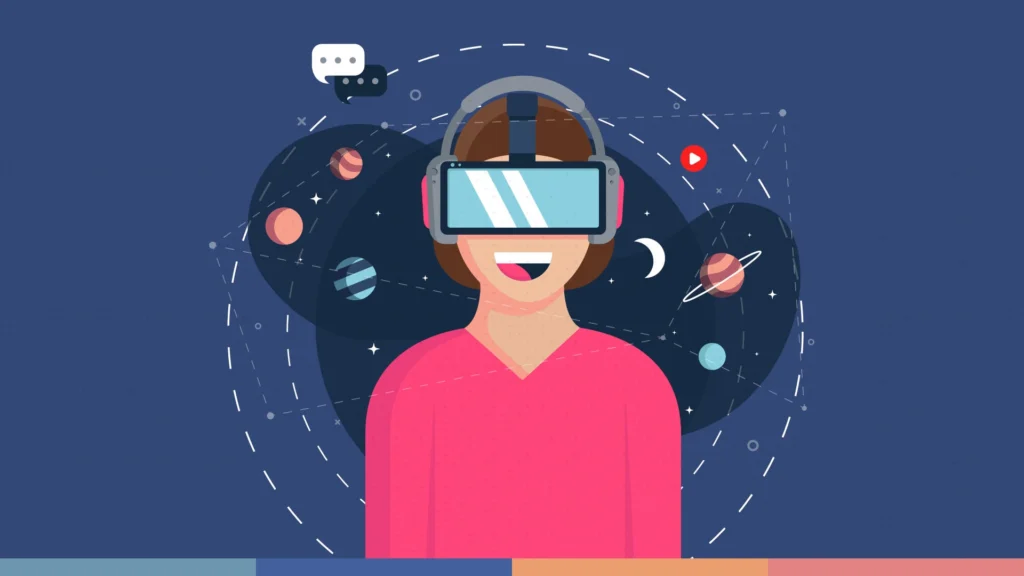
Home Services Our Works Gamification 101 Case Studies Turnkey Event Contact Languages Home Services Our Works Gamification 101 Case Studies Turnkey Event Contact Languages Home Services Our Works Gamification 101 Case Studies Turnkey Event Contact Languages Home Services Our Works Gamification 101 Case Studies Turnkey Event Contact Languages Edit Template Exploring the Current State of AR & VR in Education The world of education has witnessed a significant transformation in recent years with the integration of Augmented Reality (AR) and Virtual Reality (VR) technologies. These immersive technologies have revolutionized the way students learn and interact with educational content. In this article, we will delve into the current state of AR & VR in education, highlighting their benefits, challenges, and potential applications for businesses and institutions. The Rise of AR & VR in Education AR and VR technologies have gained immense popularity in the education sector due to their ability to enhance the learning experience. According to a report by ClassPoint, the use of AR and VR in education is expected to increase dramatically over the next five years. This growth is driven by the increasing adoption of these technologies in various educational settings, from primary schools to universities. Benefits of AR & VR in Education AR and VR technologies offer numerous benefits for students and educators alike. Some of the key advantages include: Enhanced Engagement AR and VR technologies have been shown to increase student engagement and participation in the learning process. By providing immersive and interactive experiences, these technologies can captivate students’ attention and make learning more enjoyable. Personalized Learning AR and VR technologies can be tailored to individual students’ needs, allowing for personalized learning experiences. This can be particularly beneficial for students with special needs or those who require additional support. Cost-Effective AR and VR technologies can be more cost-effective than traditional teaching methods. For instance, VR field trips can replace expensive physical trips, reducing costs and increasing accessibility. Challenges of AR & VR in Education While AR and VR technologies offer numerous benefits, there are also several challenges that need to be addressed. Some of the key challenges include: Content Creation The creation of high-quality AR and VR content can be time-consuming and expensive. This can be a significant barrier to adoption, particularly for smaller educational institutions. Accessibility AR and VR technologies require specialized hardware and software, which can be a barrier to accessibility for some students. Cyber-Sickness Some students may experience cyber-sickness, a condition characterized by dizziness, nausea, and headaches, when using VR technology. This can be a significant challenge for educators who need to ensure the well-being of their students. Applications of AR & VR in Education AR and VR technologies have a wide range of applications in education. Some of the key areas where these technologies are being used include: Simulation-Based Learning AR and VR technologies can be used to create simulation-based learning experiences that mimic real-world scenarios. This can be particularly beneficial for subjects such as medicine, aviation, and the military. Language Learning AR and VR technologies can be used to create immersive language learning experiences that simulate real-world conversations and interactions. Science and Technology AR and VR technologies can be used to create interactive and engaging science and technology lessons that make complex concepts more accessible and understandable. Conclusion AR and VR technologies have the potential to revolutionize the way we learn and interact with educational content. While there are challenges to adoption, the benefits of these technologies make them an exciting and promising area of development for the education sector. For businesses and institutions looking to stay ahead of the curve, investing in AR and VR technologies can be a valuable strategy for enhancing the learning experience and improving student outcomes. Frequently Asked Questions Q: What are the benefits of using AR and VR in education? A: AR and VR technologies offer numerous benefits for students and educators alike, including enhanced engagement, personalized learning, and cost-effectiveness. Q: What are the challenges of using AR and VR in education? A: Some of the key challenges of using AR and VR in education include content creation, accessibility, and cyber-sickness. Q: How can businesses and institutions get started with AR and VR in education? A: Businesses and institutions can start by exploring the various applications of AR and VR in education and identifying areas where these technologies can be used to enhance the learning experience. They can also consider partnering with educational institutions and technology providers to develop and implement AR and VR-based educational programs. Q: How can Level Up powered by Agate help businesses and institutions with AR and VR in education? A: Level Up powered by Agate can help businesses and institutions with marketing, increase return on investment, finding the right candidate for hiring, create a more effective assessment, and so on. If you are interested in learning more about gamification and how it can benefit you or your organization Check out our gamification services page and contact us today. We are ready to help you create a gamification experience that aligns with your needs and preferences. All Posts All Literasi Keuangan Lebih Baik dengan Gamifikasi: Kolaborasi dengan Bank Jago October 30, 2024/ Level Up powered by Agate Berpartisipasi sebagai Pembicara di Studium Generale BINUS University October 24, 2024/ Aplikasi Gamifikasi Terbaik untuk Pendidikan October 4, 2024/ Menciptakan Game yang Menyenangkan untuk Upaya Pemasaran October 3, 2024/ Bagaimana Membangun Game Dapat Memberdayakan Bisnis Anda October 2, 2024/ Contoh Gamifikasi Terbaik yang Perlu Kamu Ketahui October 1, 2024/ Memilih Partner Gamification dengan Perusahaan Pengembang Game September 30, 2024/ Memanfaatkan Mini Game dalam Aplikasi Loyalitas untuk Meningkatkan Keterikatan Pelanggan September 27, 2024/ Apakah VR dalam Pendidikan Menjanjikan? September 26, 2024/ Load More End of Content. All company names, brand names, trademarks, logos, illustrations, videos and any other intellectual property (Intellectual Property) published on this website are the property of their respective owners. Any non-authorized usage of Intellectual Property is strictly prohibited and any violation will be prosecuted under the law. © 2023 Agate.
Is Immersive Virtual Reality the Future? We Explain Why!
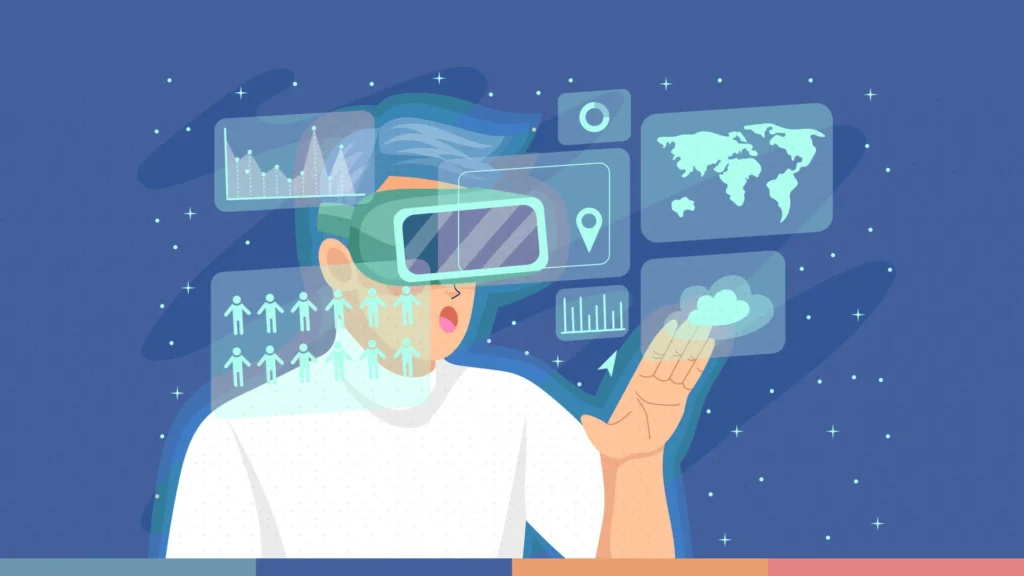
Home Services Our Works Gamification 101 Case Studies Turnkey Event Contact Languages Home Services Our Works Gamification 101 Case Studies Turnkey Event Contact Languages Home Services Our Works Gamification 101 Case Studies Turnkey Event Contact Languages Home Services Our Works Gamification 101 Case Studies Turnkey Event Contact Languages Edit Template Is Immersive Virtual Reality the Future? We Explain Why! Immersive Virtual Reality (VR) is swiftly moving from a niche technology to a mainstream tool, with applications sprawling across various industries, from healthcare to real estate, education to entertainment. As technology continues to advance and accessibility improves, immersive VR is poised to redefine our interaction with digital content. In this article, we delve into why immersive VR is likely the future of digital interaction, and how it is reshaping industry standards and consumer expectations. What is Immersive Virtual Reality? Defining Immersive VR Immersive VR refers to a fully-engulfing visual and sensory experience that transports users to a virtual world. Utilizing head-mounted displays (HMDs), spatial audio, and sometimes haptic feedback systems, immersive VR creates a compelling sense of presence that makes the virtual feel real. Defining Immersive VR Immersive VR refers to a fully-engulfing visual and sensory experience that transports users to a virtual world. Utilizing head-mounted displays (HMDs), spatial audio, and sometimes haptic feedback systems, immersive VR creates a compelling sense of presence that makes the virtual feel real. Technological Foundations At its core, immersive VR relies on advanced technologies such as 6DoF (six degrees of freedom) tracking, which allows users to move naturally in the virtual space. High-resolution displays and real-time rendering contribute to the realism, making immersive VR particularly effective for training simulations and experiential marketing. Statistical Insights and Advancements According to a report by MarketsandMarkets, the immersive VR sector is expected to grow from USD 10.5 billion in 2019 to over USD 34 billion by 2024, indicating a robust expansion driven by applications in training, education, and marketing. Businesses are finding that VR not only enhances learning outcomes with an increase in retention rates by up to 75% but also significantly boosts customer engagement and brand loyalty. The Evolution of Immersive VR Technological Advancements The rapid advancement in VR technology has significantly reduced barriers to entry. Modern VR headsets offer higher resolutions, wider field of view, and more accurate tracking systems, making the experience increasingly realistic and engaging. These improvements not only enhance user satisfaction but also expand the use cases for VR across different sectors. Increasing Accessibility As hardware costs decrease and VR software becomes more ubiquitous, immersive VR is becoming more accessible to the general public. This democratization of technology is crucial for its adoption on a global scale, ensuring it reaches a critical mass of users and industries. Why Immersive VR is the Future Enhanced Immersive Experiences Immersive VR uniquely offers a three-dimensional, interactive environment that traditional screens cannot provide. This capability allows users to feel truly present in a digital world, which is invaluable for applications such as virtual travel, immersive education, and detailed training simulations. Transformative Educational and Training Tools In education and training, immersive VR has shown to improve retention rates and engagement significantly. For example, medical students using VR can perform surgical procedures in a risk-free, controlled environment, enhancing their learning speed and comprehension. The recent surge in remote work has highlighted the need for better virtual collaboration tools. Immersive VR can create virtual workspaces that mimic the dynamics of real office environments and facilitate a new level of collaboration among global teams. In entertainment, VR is pushing the boundaries of storytelling and user interaction, providing experiences that are profoundly engaging and personal. Social VR platforms, where users can interact with each other in a fully virtual environment, are also gaining traction, redefining social connectivity. Level Up Powered by Agate: Pioneering in Immersive VR Level Up powered by Agate is at the forefront of developing immersive VR solutions that cater to businesses looking to harness the power of this technology. By integrating immersive VR into their operations, businesses can enhance their training programs, marketing strategies, and customer engagement initiatives, ultimately leading to increased ROI and improved customer satisfaction. Conclusion Immersive VR is not just a fleeting trend; it is rapidly becoming a fundamental technology that is reshaping how we interact with the world and each other. With its ability to deliver highly engaging, personalized experiences, immersive VR holds the potential to revolutionize industries, making it a pivotal element in the future of digital interaction. Frequently Asked Questions Q: What industries can benefit most from immersive VR? A: While almost all industries can benefit from VR, sectors like healthcare, education, real estate, and entertainment are currently seeing the most significant impacts due to their high reliance on visual and experiential content. Q: Are there any risks associated with immersive VR? A: Challenges include the potential for VR sickness due to prolonged use, privacy concerns with data collection in VR, and the need for substantial initial investments in VR setup and content creation. Q: How can businesses start integrating immersive VR? A: Businesses should start by identifying areas where VR can significantly impact, such as training, product demos, or customer service, and then partner with experienced VR developers like Level Up powered by Agate to create tailored solutions. Q: Is immersive VR cost-effective in the long run? A: Yes, while the initial setup for immersive VR can be costly, the long-term benefits of improved training efficiency, enhanced customer experiences, and innovative marketing can outweigh the initial investments. If you are interested in learning more about gamification and how it can benefit you or your organization Check out our gamification services page and contact us today. We are ready to help you create a gamification experience that aligns with your needs and preferences. All Posts All Literasi Keuangan Lebih Baik dengan Gamifikasi: Kolaborasi dengan Bank Jago October 30, 2024/ Level Up powered by Agate Berpartisipasi sebagai Pembicara di Studium Generale BINUS University October 24, 2024/ Aplikasi Gamifikasi Terbaik untuk Pendidikan October 4, 2024/
Create Powerful Gamified VR Education Apps (We Can Help!)
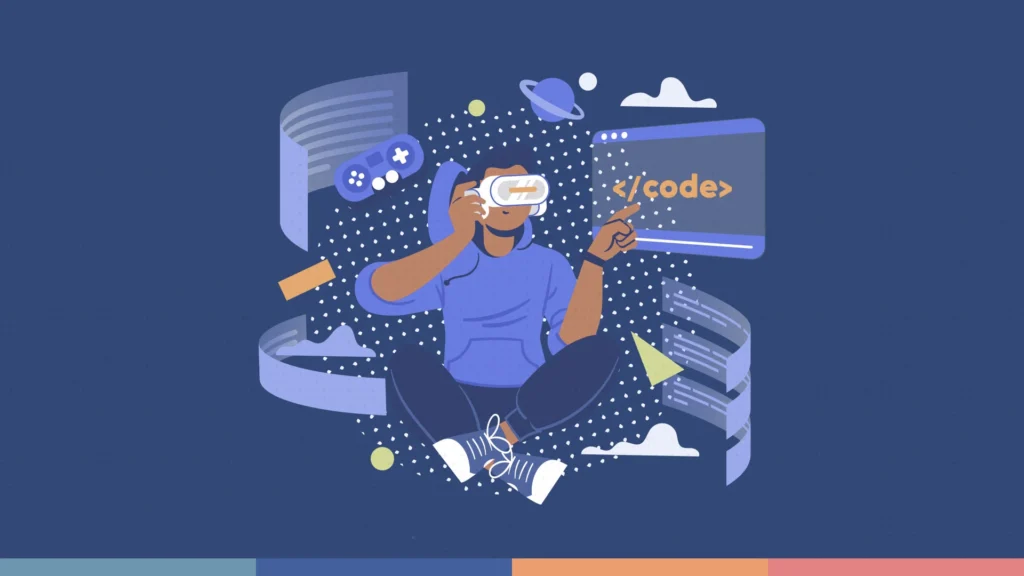
Home Services Our Works Gamification 101 Case Studies Turnkey Event Contact Languages Home Services Our Works Gamification 101 Case Studies Turnkey Event Contact Languages Home Services Our Works Gamification 101 Case Studies Turnkey Event Contact Languages Home Services Our Works Gamification 101 Case Studies Turnkey Event Contact Languages Edit Template Create Powerful Gamified VR Education Apps (We Can Help!) In today’s educational landscape, the integration of gamification and Virtual Reality (VR) is revolutionizing how institutions engage with learners. Gamified VR education apps not only enhance learning experiences but also significantly improve retention rates and engagement, making them indispensable tools for educational institutions and businesses alike. This article explores the immense benefits of gamified VR apps, supported by statistics and unique insights, and discusses how Level Up powered by Agate can assist organizations in developing these cutting-edge educational tools. The Impact of Gamified VR in Education Enhanced Engagement and Retention Studies show that VR can increase retention rates by up to 75% and boost engagement significantly compared to traditional learning methods. When combined with gamification elements like points, badges, and leaderboards, these apps create an immersive learning environment that motivates and captivates learners, encouraging continuous interaction and study. Tailored Learning Experiences Gamified VR apps allow for highly personalized learning pathways. Adaptive learning technology can adjust challenges and content in real-time based on the user’s performance, providing a customized experience that caters to the needs of diverse learners. A 2020 study in the International Journal of Emerging Technologies in Learning (IJETL) emphasizes the importance of learning analytics in identifying student progress and knowledge gaps ([learning analytics in VR]). Gamified VR can track user progress through challenges, quizzes, and interactions within the virtual world. This data can then be analyzed to pinpoint areas where a learner might be struggling, allowing educators or the VR platform to provide targeted support and resources. Practical Application and Skill Development By simulating real-world scenarios, VR apps enable learners to practice skills in a risk-free environment. This is particularly beneficial in fields such as medicine, engineering, and business, where practical experience is crucial. For instance, medical students using VR can perform surgical procedures in a controlled, virtual setting, enhancing their skills without the risks associated with real-life practice. Diverse Applications of VR in Education Language Learning VR apps can transform language learning by simulating real-world conversations and cultural immersions. For instance, students can practice Spanish by navigating a virtual marketplace in Barcelona or improve their English while interacting with virtual characters in New York. Importantly, VR also holds significant potential for teaching sign language, providing an interactive environment where students with hearing disabilities can learn and practice sign language through visual and kinesthetic experiences. Geography Virtual reality can take students on immersive journeys around the world. From the Amazon rainforest to the Sahara Desert, VR enables exploration of diverse ecosystems and cultures without leaving the classroom. This not only enhances geographic literacy but also fosters a deeper understanding of global interconnections. History VR can bring historical events to life, allowing students to witness historical events or explore ancient civilizations firsthand. Through these vivid reenactments, students gain a deeper appreciation and understanding of historical contexts and their impacts on modern society. Science For science courses, VR can offer virtual labs where students conduct experiments in physics, chemistry, or biology that might be too dangerous or expensive to perform in a school setting. These simulations can help clarify complex theories through hands-on practice and real-time manipulation of scientific elements. Mathematics VR apps can help demystify complex mathematical concepts by visualizing them in three dimensions. For example, students can interact with geometric shapes, visualize algebraic equations, and explore calculus functions in a more intuitive and engaging way. Art In art education, VR provides a virtual canvas and an unlimited supply of materials for creative expression. Students can create 3D sculptures and paintings in an immersive setting, explore different styles, and learn about art history by visiting virtual galleries featuring digital replicas of famous artworks from around the world. These diverse applications showcase the flexibility and vast potential of VR in revolutionizing educational methodologies across various disciplines. By leveraging these technologies, educators can create a dynamic learning environment that caters to all students, making complex subjects more accessible and engaging. Level Up Powered by Agate: Your Partner in VR Education Level Up powered by Agate has demonstrated a strong track record in developing innovative educational applications, blending gamification with practical learning objectives. A prime example of their expertise is seen in their collaboration with PT Bank Jago Tbk to create Jago Money Quest. This financial literacy app employs gamification to teach users about managing finances effectively using the UN Financial Health Framework. The app simulates various financial scenarios across eight game levels, guiding players from their student days to their early professional careers. This immersive approach helps players understand the importance of comprehensive factors such as health and time when making financial decisions, not just monetary ones. Additionally, Level Up has partnered with Universitas Gadjah Mada to develop Batique, a game-based intelligence assessment tool. This pioneering project showcases how gamification can be utilized in higher education to assess and enhance students’ cognitive abilities in an engaging and innovative way. Batique is a testament to Level Up’s ability to create VR education apps that are not only educational but also deeply engaging, making complex concepts more accessible and enjoyable for learners. These projects illustrate Level Up powered by Agate’s capability in creating effective educational solutions that cater to the specific needs of learners in diverse fields. With their extensive experience and creative approach, Level Up is an ideal partner for institutions looking to harness the power of VR and gamification in education. Conclusion Gamified VR education apps offer a future-forward approach to learning and training, providing immersive, engaging experiences that improve both educational outcomes and business processes. With the expert assistance of Level Up powered by Agate, organizations can harness the full potential of these innovative tools to achieve their strategic objectives.
Finding VR App Developers for Gamified Training

Home Services Our Works Gamification 101 Case Studies Turnkey Event Contact Languages Home Services Our Works Gamification 101 Case Studies Turnkey Event Contact Languages Home Services Our Works Gamification 101 Case Studies Turnkey Event Contact Languages Home Services Our Works Gamification 101 Case Studies Turnkey Event Contact Languages Edit Template Finding VR App Developers for Gamified Training As businesses and institutions increasingly recognize the value of immersive learning, the demand for skilled VR app developers specializing in gamified training solutions has surged. Gamified training leverages the engaging elements of games and the immersive quality of virtual reality to enhance learning outcomes, boost retention, and motivate learners. This article explores key considerations when searching for VR app developers capable of creating effective gamified training experiences, with insights that go beyond common knowledge. Understanding the Market Landscape The Rise of VR in Training Virtual reality has proven to be particularly effective in training environments across various industries. According to a report by Grand View Research, the global VR market in education and training is expected to grow significantly, driven by the increasing adoption of e-learning solutions and technological advancements in VR software and hardware. This trend underscores the growing need for VR developers who can integrate gamification strategies effectively. Specialized Skills and Experience Finding a VR developer who not only understands the technical aspects of VR but also grasps the nuances of gamified learning is crucial. Developers with experience in gamification understand how to apply game mechanics such as points, levels, and rewards in a training context to enhance engagement and learning outcomes. Key Considerations for Choosing VR Developers Finding the right VR app developers for gamified training can be a challenging task. However, by following these tips, you can increase your chances of finding the right developer for your business or institution: Portfolio and Past Projects Review the developer’s previous projects to assess their experience and success in creating VR applications, especially those that include gamified elements. Look for diversity in their projects and attention to user engagement and educational outcomes. Understanding of Educational Objectives A competent VR developer should demonstrate a robust understanding of how gamification can meet educational goals. They should be able to align game mechanics with learning outcomes to ensure the VR training program is both engaging and effective. Technical Proficiency and Tools Ensure the developers are proficient in the latest VR development tools and platforms, such as Unity or Unreal Engine. Their ability to use advanced features and create scalable VR solutions is essential for delivering high-quality training applications. Client Testimonials and Reviews Client feedback can provide insights into the developer’s reliability, support, and ability to deliver projects on time and within budget. Positive testimonials from previous clients, particularly from similar industries, are a strong indicator of a developer’s expertise and professionalism. Level Up Powered by Agate: Tailoring VR Solutions Level Up powered by Agate specializes in creating customized VR solutions for gamified training. Their expertise in integrating immersive technologies with gamification elements makes them an ideal partner for businesses and institutions looking to enhance their training programs. Level Up’s approach ensures that each VR solution is tailored to meet specific training objectives, thereby maximizing engagement and ROI. Conclusion Selecting the right VR app developer for gamified training involves understanding both the technical skills required and the unique aspects of gamified learning. With the VR training market expanding rapidly, partnering with experienced developers like those at Level Up powered by Agate can help institutions and businesses achieve their educational and training objectives, enhancing both learner engagement and overall ROI. Frequently Asked Questions Q: What are the benefits of using VR for training? A: VR training offers immersive, interactive experiences that can significantly improve learning retention, engage learners effectively, and provide hands-on practice in a safe, controlled environment. Q: How does gamification enhance VR training? A: Gamification introduces elements like points, badges, and leaderboards into the training scenario, which can increase motivation, encourage competition, and make learning more enjoyable and effective. Q: What should I look for in a VR development company? A: Key aspects include experience in VR and gamification, a proven track record with similar projects, strong client testimonials, and an understanding of educational objectives. Q: How can VR training impact ROI? A: VR training can reduce training costs, decrease training time, and improve employee performance and satisfaction, all of which contribute to a positive ROI. Q: How does Level Up powered by Agate ensure the effectiveness of their VR training solutions? A: Level Up works closely with clients to understand their specific needs and tailors VR solutions that align with the organization’s training goals and industry standards, ensuring effectiveness and relevance. If you are interested in learning more about gamification and how it can benefit you or your organization Check out our gamification services page and contact us today. We are ready to help you create a gamification experience that aligns with your needs and preferences. All Posts All Literasi Keuangan Lebih Baik dengan Gamifikasi: Kolaborasi dengan Bank Jago October 30, 2024/ Level Up powered by Agate Berpartisipasi sebagai Pembicara di Studium Generale BINUS University October 24, 2024/ Aplikasi Gamifikasi Terbaik untuk Pendidikan October 4, 2024/ Menciptakan Game yang Menyenangkan untuk Upaya Pemasaran October 3, 2024/ Bagaimana Membangun Game Dapat Memberdayakan Bisnis Anda October 2, 2024/ Contoh Gamifikasi Terbaik yang Perlu Kamu Ketahui October 1, 2024/ Memilih Partner Gamification dengan Perusahaan Pengembang Game September 30, 2024/ Memanfaatkan Mini Game dalam Aplikasi Loyalitas untuk Meningkatkan Keterikatan Pelanggan September 27, 2024/ Apakah VR dalam Pendidikan Menjanjikan? September 26, 2024/ Load More End of Content. All company names, brand names, trademarks, logos, illustrations, videos and any other intellectual property (Intellectual Property) published on this website are the property of their respective owners. Any non-authorized usage of Intellectual Property is strictly prohibited and any violation will be prosecuted under the law. © 2023 Agate. All rights reserved. Home Services Our Works Contact Gamification 101 Case Studies Gamification for Marketing Gamification for Learning Instagram Linkedin Twitter Facebook Youtube